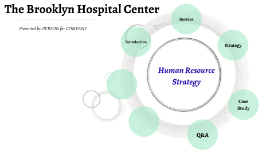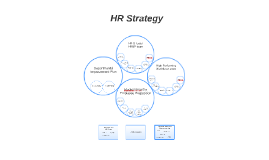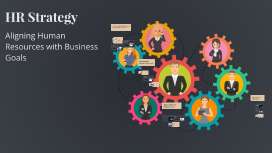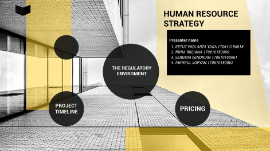HR Strategy
Transcript: HR Strategy Introduction to HR Strategy Key Components of HR Strategy Introduction to HR Strategy Key components of HR Strategy encompass talent management, organizational development, performance management, employee benefits, and workforce planning. Each component plays a vital role in shaping the overall effectiveness of HR initiatives within the organization. HR Strategy is a crucial framework that aligns human resource management with business objectives, ensuring an organization’s workforce is effectively engaged. A well-defined HR Strategy not only optimizes employee performance but also facilitates organizational growth and adaptability. Alignment with Business Objectives Objectives of HR Strategy Definition of HR Strategy The primary objectives include attracting and retaining top talent, promoting employee development, ensuring high levels of engagement, and aligning workforce capabilities with strategic business needs. HR Strategy aims to create a supportive environment conducive to growth and innovation. The alignment of HR Strategy with business objectives ensures that the workforce is prepared and motivated to meet organizational goals. By understanding business priorities, HR can develop tailored initiatives that drive performance and resilience across the company. HR Strategy refers to the comprehensive plan which outlines how human resources will support the overall business goals and objectives. It integrates various HR functions such as recruitment, training, performance management, and employee relations to create a cohesive approach to workforce management. Importance of HR Strategy An effective HR Strategy is essential for managing talent, fostering a positive workplace culture, and improving employee satisfaction. It contributes directly to achieving business outcomes, enhances competitive advantage, and ensures compliance with employment regulations. Aligning Human Resources with Business Goals Evaluating HR Strategy Effectiveness imageSearchKeywordsCombined Developing an HR Strategy HR Metrics, Employee Feedback, Review Process, Continuous Improvement, HR Best Practices Evaluating HR Strategy Effectiveness Case Studies and Best Practices Assessing the effectiveness of an HR strategy is critical for aligning HR initiatives with business outcomes. To ensure success, organizations must implement systematic evaluation processes that include metrics, feedback, and continuous improvement. Analyzing case studies of successful HR strategies provides valuable insights. Organizations showcasing best practices demonstrate the impact of effective HR management on business performance, serving as models for others to emulate. Continuous Improvement Processes Metrics for Success Setting HR Goals Implementing a culture of continuous improvement in HR enhances ongoing effectiveness. This involves regularly assessing processes, incorporating employee suggestions, and adapting to new challenges to foster an agile HR environment that meets organizational needs. Establishing key performance indicators (KPIs) allows organizations to measure the success of their HR strategies. Metrics may include employee turnover rates, satisfaction scores, and productivity measures, providing insight into the strategy's impact on overall performance. HR goals should be specific, measurable, achievable, relevant, and time-bound (SMART). Examples include improving employee retention rates by a certain percentage or enhancing recruitment efficiency to reduce time-to-hire metrics. Crafting the HR Strategy Framework Identifying Organizational Needs Employee Feedback Mechanisms Conducting Regular Reviews The HR strategy framework outlines the comprehensive approach for achieving HR goals. It includes policies, procedures, and initiatives designed to facilitate workforce development, engagement, and performance management. Establishing organizational needs calls for a thorough understanding of business goals, workforce capabilities, and market trends. Engaging with key stakeholders through interviews and workshops ensures alignment of HR strategies with overall business strategy. Regular employee feedback is a vital component in evaluating HR effectiveness. Surveys, interviews, and focus groups provide insights into employee satisfaction and engagement, revealing areas for improvement within HR policies. Periodic reviews of HR strategies ensure alignment with current business goals. Annual or semi-annual evaluations enable adjustments based on performance data, changing market conditions, and employee feedback, reinforcing HR's role in organizational success. Implementation Planning Effective implementation involves detailed action plans, resource allocation, and timelines. It is critical to assign roles, establish accountability, and ensure regular communication to monitor progress and address challenges promptly. Developing an HR Strategy A well-structured HR strategy is essential for aligning human resources with business

















